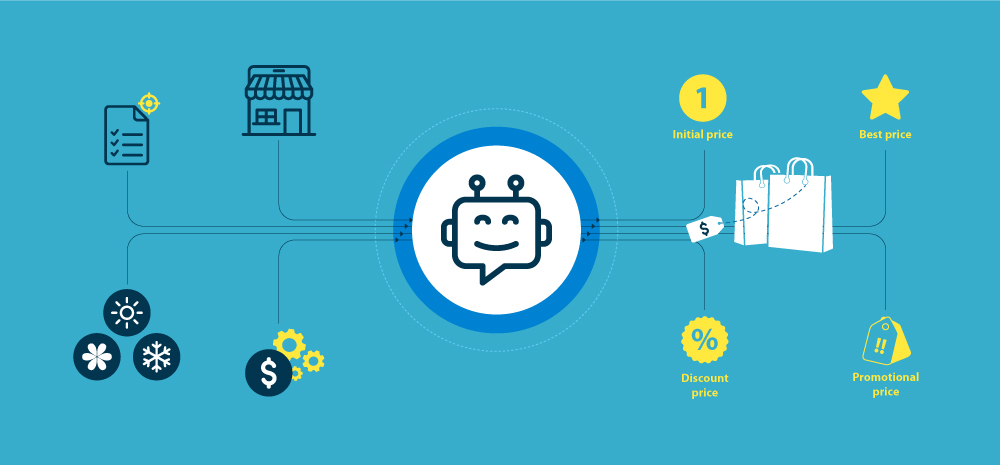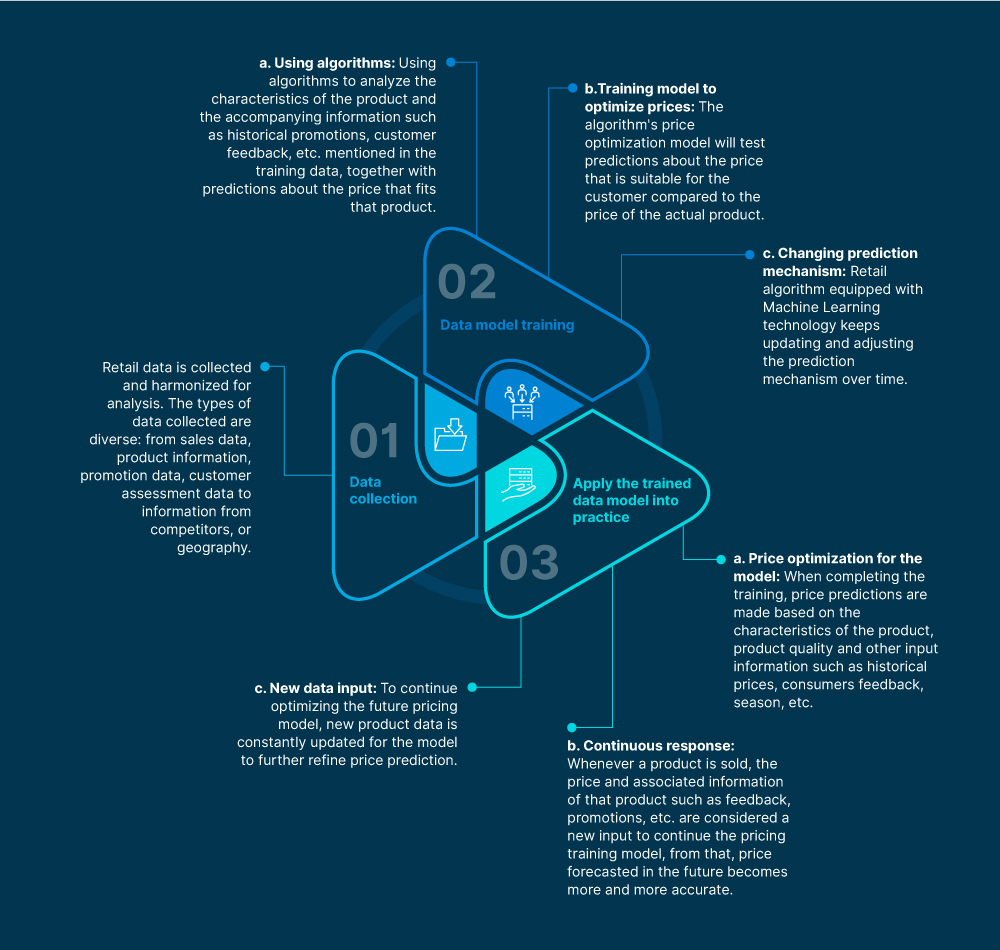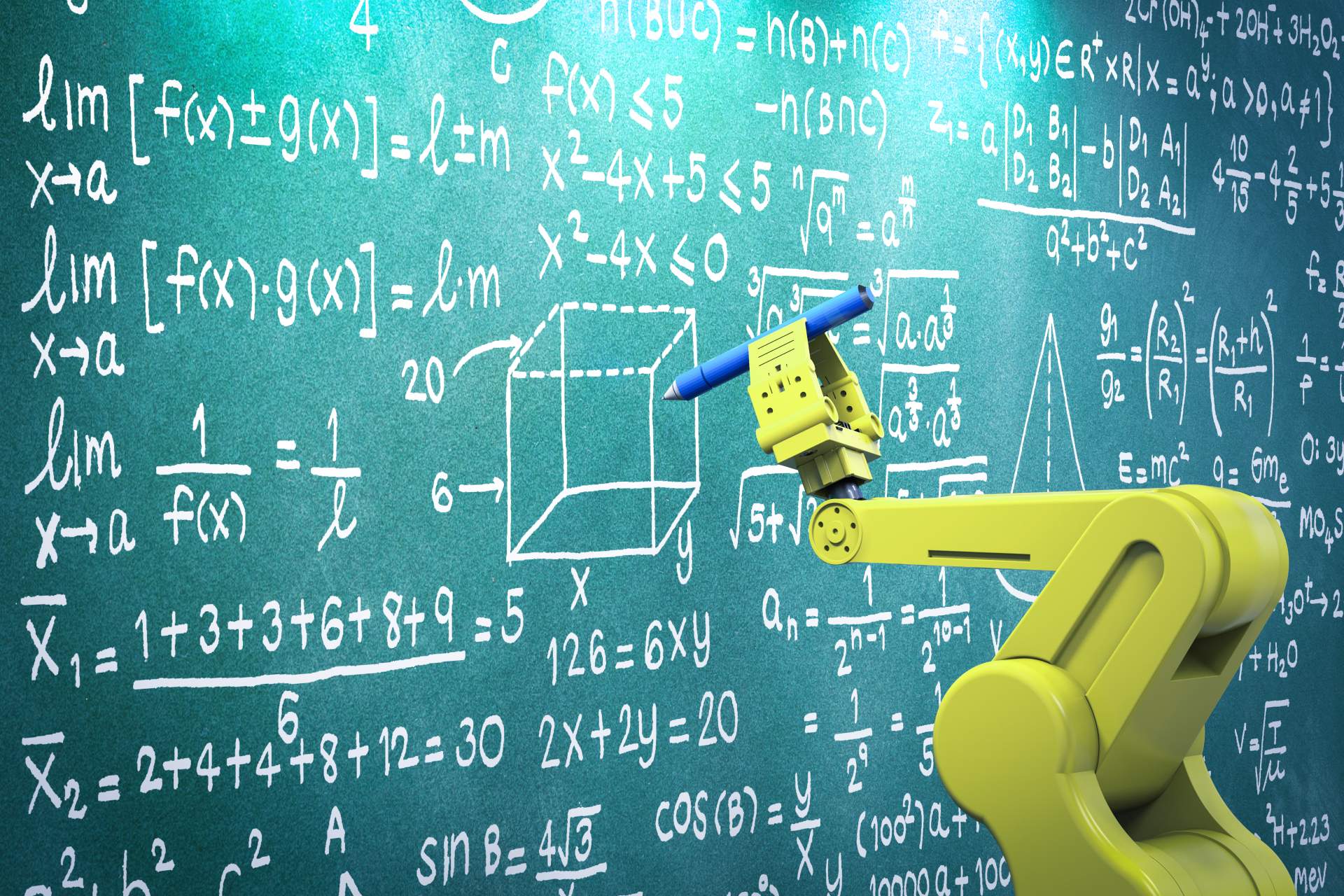Machine learning technology provides analytics and predictions that help retailers decide on optimal pricing and pricing strategy.
The importance of pricing strategies to retailers
Price is still one of the most important factors affecting a consumer’s purchase decision, which directly affects retailer’s sales. Retailers always understand that, in addition to product quality, they need to offer attractive prices as well as promotions at suitable time to attract customers. During the peak season, they need to identify prices that are beneficial for high purchasing power products. During sales period, they need to calculate the discount to what extent to ensure that the inventory of the previous season is sold out but still achieve maximum profits. This requires businesses to set up a smart pricing plan. Businesses when planning costs should answer the following questions:
• What price should be set for the product?
• What is the best time to raise or lower product prices?

However, developing a smart pricing plan is a challenge for retailers as up to this time, it has been determined based on personal capacity and experience, which is often time-consuming but has low-level of effectiveness since there are many factors that may affect the price strategy.
Such as competitor analysis, weather, shopping season, operating costs, demand by region as well as company goals. Currently, with the strong development of technology in the digital age, especially those of machine learning and deep learning, the need to optimize profits based on a smart pricing plan of the retailer has been met easily and effectively.
Understand Machine Learning and method to set optimal selling prices
First of all, Machine Learning techniques are defined as an area of Artificial Intelligence, using algorithms that allow computers to learn from historical data to be able to provide predictive analytics, or perform tasks, instead of being explicitly programmed for each job.
Machine Learning technology is trained through sample models and summarized into consumption patterns that are repeated over time. Using the results of this analysis, businesses can predict the reaction of customers to each price level, from which, decide the most profitable price. Implement a machine learning development model to determine the optimal price as follows:

In addition to determining the optimal selling price for each product, Machine Learning also helps retailers in various tasks related to pricing policies for different products. For example, Machine Learning can link between a new product and similar products to predict consumer scenarios. Machine Learning does this due to its ability to look at huge data files, spanning within history to draw common patterns, from which to make predictions. Thereby, retailers can know the relationship between products, specific examples:
- If you promote sales of Samsung Note 10 phones, will iPhone products be affected?
- If a customer has purchased a phone, is there possibility to buy a case or a backup charger?
- Are customers who purchased a few products before sensitive to an advertising campaign for another product?
Answers to these questions can help retailers a lot in making strategic pricing decisions for products and marketing policies.

Applying Machine Learning model in the world in optimizing prices
Price optimization with Machine learning has been used successfully in industries such as hotels, airlines, car rentals and online retail. Often these units apply dynamic prices, which vary flexibly according to the season, according to using demand at each time. The most visible examples are e-commerce retail sites, especially hotel room rentals services such as Booking.com, Agoda, etc. These sites don’t have a fixed price policy but change continuously by the day, the season, according to the promotional hours that they set themselves to attract and retain customers, while at the same time, optimize profits for businesses.
US-based retail giant Walmart also uses Machine Learning technology to map shorter delivery routes, save more time, and enable shipment tracking as well as displayed products matching based on personal purchasing and web browsing history. Online retailer Amazon also applies Machine Learning on its huge database to forecast price, consumption power for its products, detect fraudulent activities and offer customized product recommendations for customers.
The future of Machine Learning in retail pricing
The huge computing power of machine learning helps retailers leverage the data that is still being generated daily, hourly. According to a study, optimizing the price thanks to machine learning can increase revenue by 16%*. This shows a general trend in the future when machine learning is integrated in more and more price optimized software, and retailers can choose the optimal price easier, bring unique shopping experience for customers as well as benefits for businesses.
Reference source
(*) Competera. N.d. How a leading European retailer maximized revenue without losing margin?





